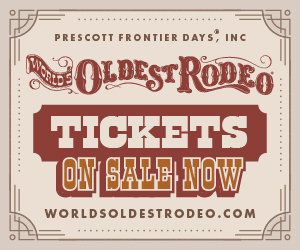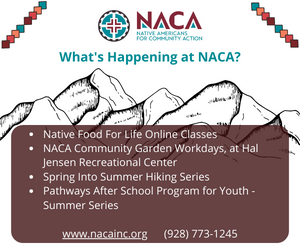 Not being bamboozled by the glut of fake news bombarding the information consumer rests squarely with the person receiving and interpreting the data.
Not being bamboozled by the glut of fake news bombarding the information consumer rests squarely with the person receiving and interpreting the data.
“It’s a problem all across society,” said Brian J. Rackham, assistant professor in the School of Communication at Northern Arizona University (NAU). “Even the term ‘fake news’ has been corrupted to where factual sources are being called ‘fake’ because they don’t agree with the opinions of the people reading it.”
Rackham, also a doctoral student at the Arizona State University Walter Cronkite School of Journalism and Mass Communications, is writing his thesis on “citizen journalism.” An area of particular interest over his journalistic career in print, radio and television, he said, has been the past and future of news and how the internet has altered its distribution.
Eighty-one percent of Americans surveyed say it is easier to find useful information today than it was only five years ago, according to the Associated Press-National Opinion Research Center (NORC) for Public Affairs at the University of Chicago. However, that wide-ranging availability of information presents another inherent problem: soaking it all in. Sixteen percent of those surveyed by NORC report they often are “overwhelmed” by how much information comes to them, and another 62 percent say the amount of information can “sometimes” be too much.
“The barriers to entry have been lowered so that everyone can become a publisher,” Rackham explained. “The internet has opened the doors to people writing what they have wanted to write, and that has been aggravated [first] by Facebook, then [by] Google Search. They are designed to present to you what you want to hear.”
Responsible journalists assert ethical standards in delivering complete, accurate and unbiased news. Amateur reporting, self-serving fact spinning and outright falsehoods in both traditional and digital media, however, continue to assault credibility. Expanding web platforms and pay-per-click incentives tempt individuals and businesses into expressing all kinds of one-sided opinions and perspectives.
“People have learned to create fake news to try to influence readers and news consumers,” said Mary Tolan, NAU journalism professor. “With the internet, something can be written anywhere in the world and end up on people’s home or work computers within seconds. Some fake news creators are getting paid, often by the number of clicks, while others are just into creating fantasies that will trick people, and still others are willing to lie to gain power. This last, sadly, has been going on since humans arrived.”
About 64 percent of adults in the United States believe fabricated news stories cause a great deal of confusion about the basic facts of current issues and events, according to a 2016 survey conducted by Pew Research Center. That perspective persists across nearly all levels of income, education, partisanship and most other demographic characteristics, PEW reports.
A large percentage of PEW survey participants expressed confidence in their own ability to detect fake news when confronted with it. Thirty-nine percent conveyed being “very confident” and 45 percent “somewhat confident” in that aptitude. On the political front, about one third of survey participants reported that they had seen stories they believed were not true. Twenty-three percent said they have shared false news, with 14 percent acknowledging that they had acted knowingly and another 16 percent later discovering untruths in what they had shared.
Jill Markgraf, head of research and instruction in the McIntyre Library at the University of Wisconsin-Eau Claire (UWEC) writes online at uwec.com that “the issue is about more than peddling intentional falsehoods on the internet. It is about limiting our exposure to only that information which confirms existing beliefs… creating our own filtered reality.”
Markgraf remains “encouraged that fake news discussions are bringing up issues that librarians have long championed. As librarians, we are committed to providing access to reliable information. We teach the information literacy skills of finding, evaluating and selecting appropriate and reliable sources, usually in relation to academic pursuits. Events such as the rancorous presidential campaign, mistrust in the scientific method and a growing partisan divide have made it more imperative that we employ these skills in our daily lives.”
About 55 percent of survey respondents to NORC say they can “mostly” or “completely” trust information from blogs. Fifty-three percent report the same confidence in social media. Among those obtaining information used in their daily lives from newspapers, radio, search engines, TV and magazines, eight in 10 perceive their sources similarly.
To help identify false or misleading information, Markgraf suggests that consumers:
- Utilize sites such as snopes.com and politifact.com or call your librarian.
- Beware misleading or edited images with Google’s reverse image search.
- Avoid “clickbait” employed to lure readers to advertising or even legitimate news.
- Ditch conventional thinking that .edu and .gov web addresses are “inherently trustworthy” and .com is not.
Rackham advocates reading stories from multiple sources, including those not previously tried, and challenging long-held beliefs to ensure they remain valid. He explained that he “tends to believe in an objective truth, where there’s always room for opinion on different subjects. People should have the freedom to publish whatever they want.”
He also said that social media and online publishers have a “responsibility not to promulgate lies. Facebook is a big culprit here and Google is right behind them. Yahoo is really terrible in that area, too, but fewer people are paying attention to them these days.”
Tolan suggests that readers consider the source of every story and try to go beyond their normal news sources to see what else is out there. “Let’s get out of our silos of information and try to understand one another.” FBN
By Sue Marceau, FBN







